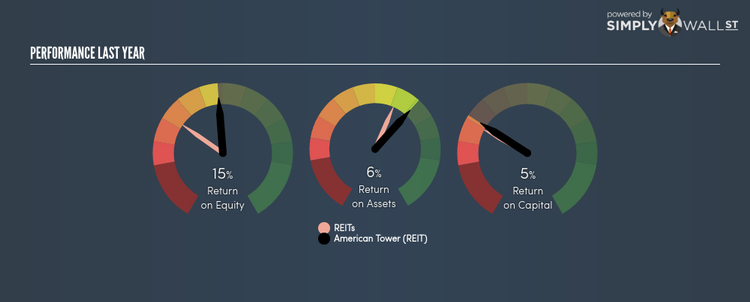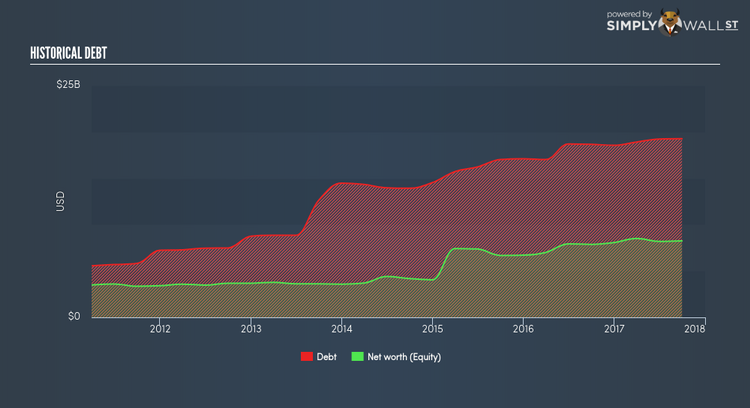Can American Tower Corporation (REIT) (NYSE:AMT) Continue To Outperform Its Industry?

American Tower Corporation (REIT) (NYSE:AMT) delivered an ROE of 15.30% over the past 12 months, which is an impressive feat relative to its industry average of 7.20% during the same period. While the impressive ratio tells us that AMT has made significant profits from little equity capital, ROE doesn’t tell us if AMT has borrowed debt to make this happen. In this article, we’ll closely examine some factors like financial leverage to evaluate the sustainability of AMT’s ROE. View our latest analysis for American Tower (REIT)
Breaking down ROE — the mother of all ratios
Firstly, Return on Equity, or ROE, is simply the percentage of last years’ earning against the book value of shareholders’ equity. An ROE of 15.30% implies $0.15 returned on every $1 invested. While a higher ROE is preferred in most cases, there are several other factors we should consider before drawing any conclusions.
Return on Equity = Net Profit ÷ Shareholders Equity
ROE is measured against cost of equity in order to determine the efficiency of American Tower (REIT)’s equity capital deployed. Its cost of equity is 8.49%. Given a positive discrepancy of 6.81% between return and cost, this indicates that American Tower (REIT) pays less for its capital than what it generates in return, which is a sign of capital efficiency. ROE can be split up into three useful ratios: net profit margin, asset turnover, and financial leverage. This is called the Dupont Formula:
Dupont Formula
ROE = profit margin × asset turnover × financial leverage
ROE = (annual net profit ÷ sales) × (sales ÷ assets) × (assets ÷ shareholders’ equity)
ROE = annual net profit ÷ shareholders’ equity
The first component is profit margin, which measures how much of sales is retained after the company pays for all its expenses. Asset turnover shows how much revenue American Tower (REIT) can generate with its current asset base. The most interesting ratio, and reflective of sustainability of its ROE, is financial leverage. Since ROE can be artificially increased through excessive borrowing, we should check American Tower (REIT)’s historic debt-to-equity ratio. The debt-to-equity ratio currently stands at a high 233.38%, meaning the above-average ratio is a result of a large amount of debt.
Next Steps:
ROE is a simple yet informative ratio, illustrating the various components that each measure the quality of the overall stock. American Tower (REIT)’s above-industry ROE is encouraging, and is also in excess of its cost of equity. Its high debt level means its strong ROE may be driven by debt funding which raises concerns over the sustainability of American Tower (REIT)’s returns. Although ROE can be a useful metric, it is only a small part of diligent research.
For American Tower (REIT), there are three essential factors you should further research:
Financial Health: Does it have a healthy balance sheet? Take a look at our free balance sheet analysis with six simple checks on key factors like leverage and risk.
Valuation: What is American Tower (REIT) worth today? Is the stock undervalued, even when its growth outlook is factored into its intrinsic value? The intrinsic value infographic in our free research report helps visualize whether American Tower (REIT) is currently mispriced by the market.
Other High-Growth Alternatives : Are there other high-growth stocks you could be holding instead of American Tower (REIT)? Explore our interactive list of stocks with large growth potential to get an idea of what else is out there you may be missing!
To help readers see pass the short term volatility of the financial market, we aim to bring you a long-term focused research analysis purely driven by fundamental data. Note that our analysis does not factor in the latest price sensitive company announcements.
The author is an independent contributor and at the time of publication had no position in the stocks mentioned.


